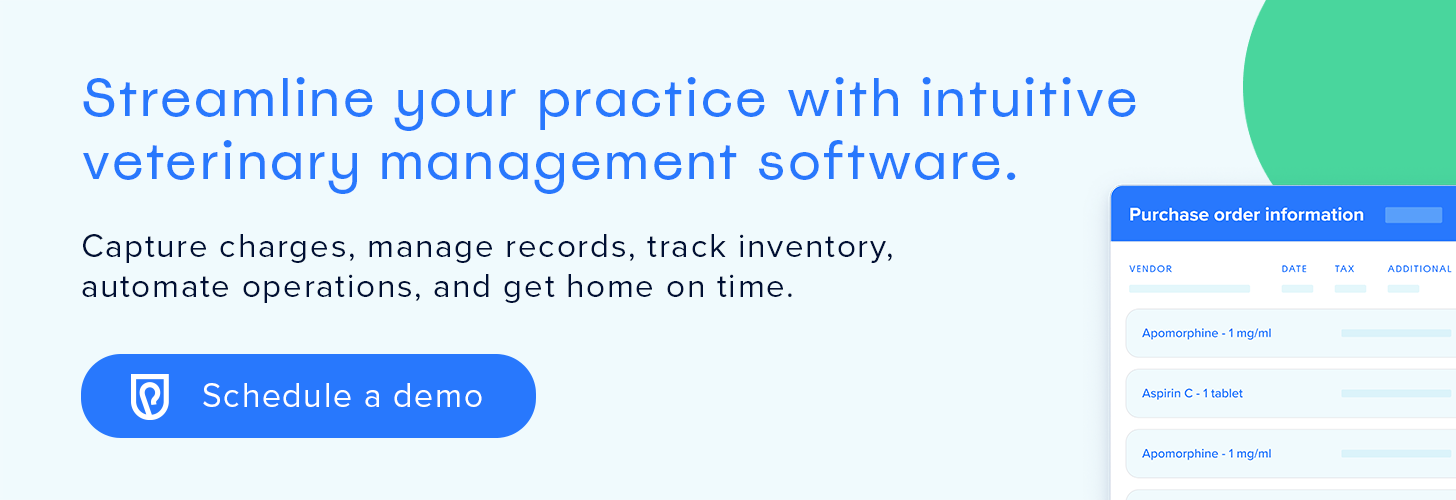Raising Your Prices...What’s Next?

How to Raise Prices Without Losing Clients
After much deliberation and likely some reluctance, you’ve decided to raise prices for your veterinary services. Making the decision can seem like the most difficult part of the process. However, how you proceed from here can impact your clients’ trust and spending habits and shape your practice’s growth. Consider our Shepherd Veterinary Software team’s tips on how to raise prices without losing clients.
Knowing your why—Reasons for raising veterinary practice prices
Whether you’re raising prices on specific services, treatment categories, or across the board, being able to explain your reasons can help ease staff and clients through the transition. Writing down your reasons—or better yet, creating a simple script—can also help you feel more confident, rather than apologetic, about raising prices. Your reasons will likely include:
- Inflation — Your prices must stay on par with inflation to maintain steady profits and business growth.
- Operational costs — Rising prices, such as for vendor products and services, have affected every part of veterinary patient care.
- Supply and demand — Increased demand for veterinary services and simultaneous staffing shortages make providing high-quality care at last year’s prices challenging.
- Staffing costs — Retaining or attracting skilled team members in this competitive market requires increased wages and benefits.
Once you know your reasons for raising prices, educate and empower your team. Client service representatives (CSRs), technicians, and assistants are often the first to hear from pet owners about pricing concerns and frustrations. However, when your staff understands that price increases aren’t arbitrary, they can speak to clients with clarity and conviction—thereby preserving client trust and diffusing possible tension.
Speak up or stay quiet? Talking with veterinary clients about price increases
Minor price increases likely don’t require a public service announcement. However, if you don’t give clients advance notice about sizable fee increases on popular services, you may trigger undesirable backlash.
Whether you decide to send a formal email or letter or to stay mum, you and your team should be prepared for cost-based conversations. Follow these important strategies for communicating price increases without losing customers:
- Empathize with your clients — If clients raise price concerns, echo their emotions with empathetic statements that acknowledge them.
- Explain the need — When appropriate, outline the practical reasons for a price increase.
- Focus on benefits — Emphasize how your pricing model is necessary to provide exceptional pet care.
- Communicate the value — To help clients understand that each charge is more than a line item, explain the behind-the-scenes tasks that go into common services.
Your practice management software can simplify price increase management
Your veterinary practice management software is an enormous asset for calculating costs, setting prices, determining timing, and deciding which services need a pricing change. Your software’s reporting feature can help you track production and retail sales, and assess inventory levels and costs to ensure your pricing is appropriate and generating sufficient revenue.
Once you’ve determined which services require price increases, update associated inventory and total costs in your software. Remember to check any bundled services to ensure that the new pricing is reflected in the total charge.
When choosing to notify clients, use your software’s communication tools, such as mass email, text messaging, or pet portal notifications. Send a formal message detailing the price increase and your commitment to providing premium veterinary care.
To help clients manage rising pet care costs without sacrifice, educate them about veterinary financing resources such as CareCredit, ScratchPay, and Sunbit—which is newly integrated with Shepherd Veterinary Software. When clients learn they can pay off their pet care loans over time, it can soften the shock of an unexpected price increase and communicate your support for your clients and their pets.
Financial forecasting—How to anticipate and set future price increases
Veterinary practices can’t afford to postpone price increases, but many do—citing negative client response and loss of business as common reasons. Unfortunately, failure to raise prices regularly is ultimately more costly than making small frequent increases. Your practice can suffer from static profits, forcing you to raise prices steeply at some point to stay afloat. This sudden change can be a tough blow for clients, driving them to seek care elsewhere. According to industry experts, quarterly pricing reviews are the best way to stay ahead of inflation and ensure an appropriate profit margin on goods and services.
Alternatively, you may elect to raise prices slowly when associated products or fees increase. You can accomplish this by routinely updating vendor costs in your practice management software. Frequent, small increases support healthy practice growth, are generally less shocking to clients, and can help them anticipate future increases in veterinary costs.
Raising your prices can feel like a tightrope act between financial necessity and client satisfaction. But, with thoughtful planning, careful consideration, and regular review, you can transform that high-wire to a level pathway. Shepherd Veterinary Software provides an equally effortless experience with its intuitive design, cloud-based flexibility, and a host of streamlined features inspired by how you work. Contact us to schedule your free demo, and discover how practice management software can make your daily routine flow smoothly.
